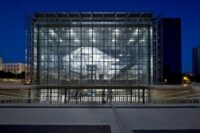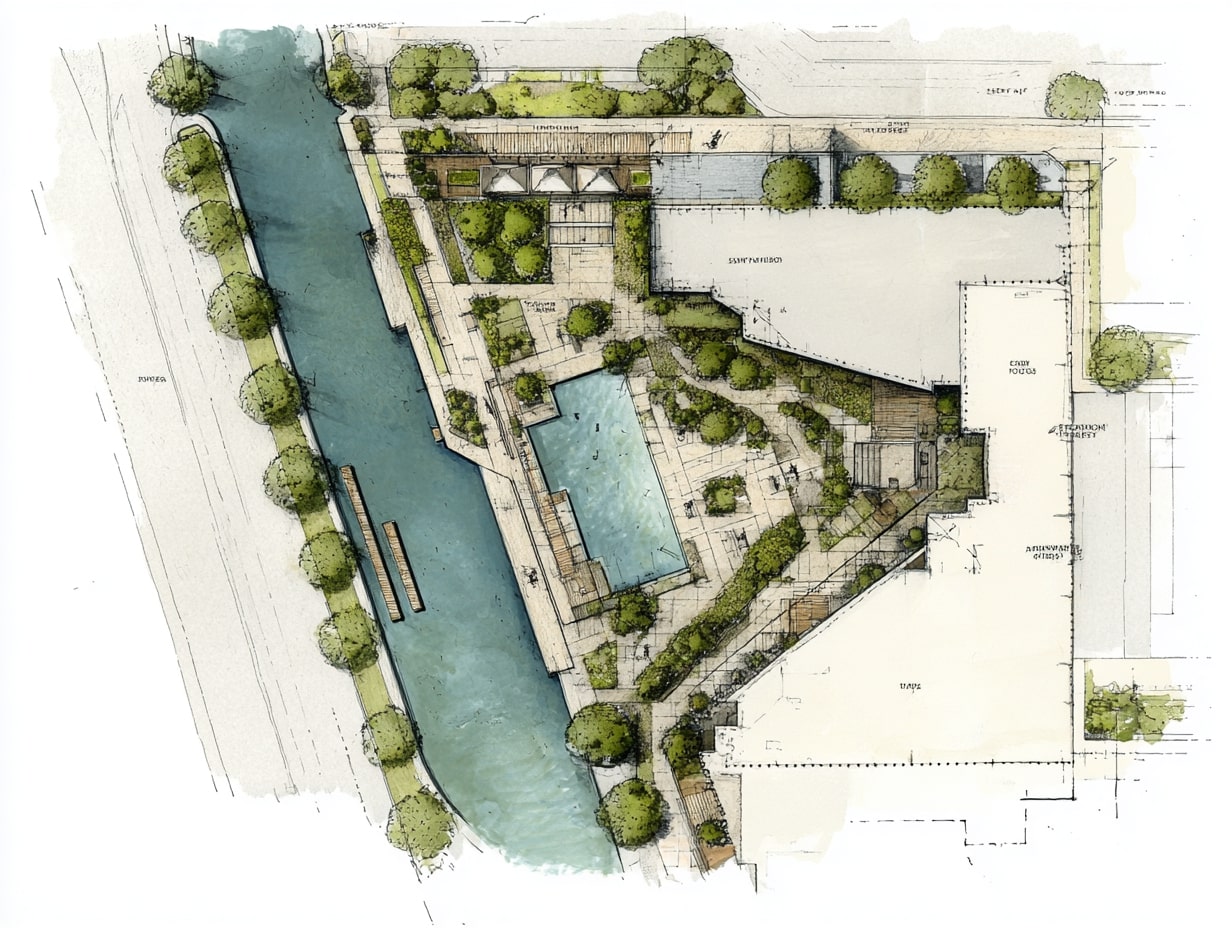- Home
- Articles
- Architectural Portfolio
- Architectral Presentation
- Inspirational Stories
- Architecture News
- Visualization
- BIM Industry
- Facade Design
- Parametric Design
- Career
- Landscape Architecture
- Construction
- Artificial Intelligence
- Sketching
- Design Softwares
- Diagrams
- Writing
- Architectural Tips
- Sustainability
- Courses
- Concept
- Technology
- History & Heritage
- Future of Architecture
- Guides & How-To
- Art & Culture
- Projects
- Interior Design
- Competitions
- Jobs
- Store
- Tools
- More
- Home
- Articles
- Architectural Portfolio
- Architectral Presentation
- Inspirational Stories
- Architecture News
- Visualization
- BIM Industry
- Facade Design
- Parametric Design
- Career
- Landscape Architecture
- Construction
- Artificial Intelligence
- Sketching
- Design Softwares
- Diagrams
- Writing
- Architectural Tips
- Sustainability
- Courses
- Concept
- Technology
- History & Heritage
- Future of Architecture
- Guides & How-To
- Art & Culture
- Projects
- Interior Design
- Competitions
- Jobs
- Store
- Tools
- More
Why Is Air Conditioning Important in Building Design: Key Benefits and Insights
Discover why air conditioning is a cornerstone of modern building design. Explore its role in enhancing comfort, improving air quality, and driving energy efficiency. Learn how smart systems, sustainable practices, and advanced technologies shape healthier, adaptable, and eco-friendly indoor environments, while addressing challenges like maintenance and environmental impact for long-term benefits.

When we think about modern buildings, comfort and functionality often come to mind. A crucial element that ties these together is air conditioning. Ensuring clean and efficient duct work through air duct cleaning in Tampa by Bright Air Duct Cleaning plays a key role in improving indoor air quality and system performance. It’s not just about cooling a space; it’s about creating an environment where people can thrive, whether at work, home, or in public spaces.
Air conditioning plays a vital role in regulating indoor temperatures, improving air quality, and ensuring energy efficiency. As building designs evolve to meet environmental and human needs, integrating effective cooling systems has become more essential than ever. It’s about more than convenience—it’s about sustainability, productivity, and well-being.
By prioritizing air conditioning in building design, we’re not just addressing immediate comfort but also future-proofing spaces to adapt to changing climates and demands. Let’s explore why this aspect of design is a cornerstone of modern architecture and how it impacts the way we live and work.

Table of Contents
ToggleThe Role Of Air Conditioning In Modern Buildings
Air conditioning forms a critical component of modern building design by ensuring comfortable indoor environments and maintaining essential climate controls. Its presence affects not only occupant well-being but also building performance and energy efficiency.

Enhancing Comfort For Occupants
Air conditioning optimizes indoor conditions by providing consistent temperature, humidity, and airflow regulation. This ensures a pleasant environment for occupants in residential buildings, offices, and public spaces. For example, in workplaces, controlled air enhances productivity by reducing heat-related discomfort. In hospitals, it supports patient comfort, aiding recovery.
Regulating Indoor Temperatures
Air conditioning systems actively manage temperature levels, counteracting external heat or cold for year-round comfort. Smart systems, integrated into modern designs, ensure efficient adjustments based on occupancy and weather changes. For regions with extreme climates, such systems prevent temperature imbalances that could disrupt functionality or damage building materials.
Importance In Energy Efficiency
Air conditioning systems play a critical role in enhancing energy efficiency within building designs. By integrating advanced technologies, they optimize power usage while maintaining indoor comfort.

Contribution To Sustainable Design
Modern air conditioning systems support sustainable building practices by reducing energy reliance. Features like variable refrigerant flow and energy recovery ventilators allow even distribution of cooled air without excessive energy waste. Incorporating air conditioning into green building designs aids in meeting certifications like LEED by minimizing environmental impact.
Reducing Overall Energy Consumption
Optimizing air conditioning efficiency lowers overall energy demand in buildings. Smart systems, when equipped with occupancy sensors and programmable thermostats, adjust operation based on usage patterns. For instance, adaptive cooling reduces energy use during off-peak hours, ensuring that resources aren’t overexploited. This approach significantly cuts electricity costs and reduces carbon footprints.
Impacts On Indoor Air Quality
Air conditioning plays a crucial role in maintaining indoor air quality by controlling humidity, filtering pollutants, and regulating airflow. Properly designed systems prevent issues that can harm occupants’ health or degrade building conditions.

Prevention Of Mold And Mildew
By maintaining optimal humidity levels, air conditioning prevents excess moisture from accumulating indoors. Mold and mildew thrive in humid environments, posing risks to both health and structural elements. For example, systems with dehumidifiers maintain indoor humidity between 30% and 50%, reducing fungal growth. Effective moisture control protects walls, ceilings, and HVAC components from damage while minimizing respiratory irritants like mold spores.
Filtration Of Pollutants
High-quality air conditioning systems remove airborne contaminants using advanced filtration mechanisms. Filters capture pollutants such as dust, pollen, and particulate matter, improving air purity. Enhanced filtration systems like HEPA filters reduce allergens and improve conditions for individuals with respiratory issues. Air conditioning also limits the circulation of outdoor pollutants, contributing to healthier indoor environments for occupants.
Supporting Technological Integration
Air conditioning plays a pivotal role in integrating advanced technology into building design. It complements smart systems and evolves alongside innovations in HVAC technology to meet modern demands.

Smart Building Systems
Smart building systems rely on air conditioning for seamless operation and occupant comfort. These systems incorporate advanced features like occupancy sensors and IoT connectivity to enhance efficiency and functionality. For example, AC systems connected to smart thermostats automatically adjust cooling levels based on real-time data, like occupancy patterns and weather conditions. This reduces energy wastage while maintaining consistent indoor environments.
Integration with building management systems (BMS) allows centralized control over cooling operations. For instance, a BMS can monitor system performance, detect inefficiencies, and schedule maintenance, ensuring uninterrupted operation. These technologies improve not only comfort but also operational efficiency and lifecycle cost-effectiveness.
Innovations In HVAC Design
HVAC design innovations are reshaping air conditioning solutions for buildings. Variable refrigerant flow (VRF) technology optimizes energy consumption by adjusting cooling power based on zone-specific requirements. Systems utilizing energy recovery ventilators (ERVs) reclaim and repurpose energy from exhaust air, reducing resource consumption.
New refrigerants with lower global warming potential (GWP) address regulatory and environmental concerns. Similarly, AI-driven diagnostics improve system performance by identifying maintenance needs before they cause failures. When paired with modular designs, these advancements make it easier to scale systems for larger, multi-purpose facilities while reducing installation complexity and space requirements. These innovations ensure air conditioning systems support both current and future technological demands.
Challenges And Considerations
Air conditioning systems play a pivotal role in building design, but they come with challenges that require thoughtful consideration. Addressing these factors is essential to balance functionality, cost-effectiveness, and environmental impact.

Maintenance And Operating Costs
Maintenance and operating costs are significant challenges in air conditioning system design. Regular upkeep, including cleaning filters, inspecting ductwork, and servicing mechanical components, is vital for ensuring efficiency and longevity. Neglecting maintenance can reduce performance, increase energy consumption, and shorten equipment lifespan.
Operating expenses can rise due to inefficient systems or fluctuating energy prices. Overworking systems in poorly insulated or improperly ventilated buildings further increases energy use. Advanced solutions like smart sensors and automated systems help mitigate costs by optimizing energy use based on occupancy and real-time conditions.
Environmental Concerns
Environmental concerns are a critical consideration for modern air conditioning systems. Traditional refrigerants, such as chlorofluorocarbons (CFCs) and hydrochlorofluorocarbons (HCFCs), have contributed to ozone depletion and global warming. Transitioning to eco-friendly refrigerants like hydrofluoroolefins (HFOs) reduces environmental impact.
Energy consumption is another factor, as HVAC systems account for a substantial portion of a building’s energy use. Incorporating energy-efficient technologies, such as variable speed compressors and energy recovery ventilators, decreases carbon emissions. Designing systems compatible with renewable energy sources, like solar or wind, further enhances sustainability.
Adopting these approaches minimizes the ecological footprint of air conditioning systems while meeting modern demands.
Conclusion
Air conditioning plays a central role in building design by ensuring indoor comfort, enhancing air quality, and supporting energy-efficient practices. Its integration into architectural plans goes beyond temperature regulation, addressing humidity control and pollutant filtration. Through advanced technologies like smart sensors, variable refrigerant flow, and energy recovery ventilators, air conditioning systems contribute to sustainable development and optimized energy usage. Modern designs utilize eco-friendly refrigerants and renewable energy compatibility, reducing both operational costs and environmental impact.
Properly maintained air conditioning systems improve durability, prevent health risks, and maintain structural integrity by controlling humidity and airflow. By supporting advanced building management systems and AI-driven diagnostics, air conditioning ensures long-term functionality, adapting to growing technological demands. As a vital component of contemporary architecture, it aligns energy efficiency, environmental sustainability, and occupant comfort, making it indispensable in modern building design.
- air conditioning energy savings
- air conditioning for commercial buildings
- air conditioning in building design
- air conditioning insights
- air quality in buildings
- architectural design and air conditioning
- benefits of air conditioning
- building design with air conditioning
- cooling systems in buildings
- energy efficient air conditioning
- green building air conditioning
- HVAC design strategies
- importance of air conditioning
- indoor climate management
- modern building HVAC systems
- residential air conditioning systems
- smart air conditioning solutions
- sustainable building air conditioning
- temperature control in buildings
Submit your architectural projects
Follow these steps for submission your project. Submission FormLatest Posts
Understanding Site Safety Footwear in Architectural Practice
Architecture is often discussed through drawings, models, and finished buildings, yet a...
General Arrangement Drawings in Architecture: The Backbone of Clear Design Communication
General Arrangement Drawings explained: what they are, when to use them, how...
The Ultimate Guide to Fencing in North Dakota: Choosing the Best Fence for Your Property
Watching a chain link fence twist in 70 mph winds near Minot...
Gaudí: Where Architecture Meets Science
Gaudí: Where Architecture Meets Science shows catenary arches, ruled surfaces, and biomimicry...












Leave a comment